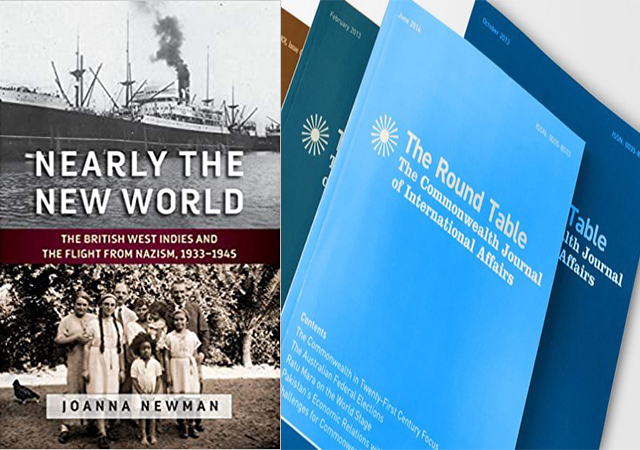
[This is an excerpt from a book review in The Round Table: The Commonwealth Journal of International Affairs.]
The volume fills some important gaps in Jewish and Caribbean studies by extending understanding of the nature of diaspora communities from the previous focus on Irish, African, South Asian, and Middle Eastern groups to include the under documented Jewish, and particularly Ashkenazi, presence in the British West Indies. It also contributes to understanding of the history of migration as an important constant in the life of the Caribbean. An illustration of this is a story of Gibraltar Camp on the former Mona plantation in Kingston, Jamaica, which started with the forced importation of African slaves, before going on to incorporate the lives of indentured East Indian workers, interned Germans and Italians, evacuees from Gibraltar, and Jewish and non-Jewish refuges. Today, Mona is of course a campus of the University of the West Indies, welcoming academics and students from across the world.
Newman adds testimony to the narrative of Holocaust studies by recording the ever-changing number of amendments (from the early 1930s) to British immigration legislation designed to curb immigration from Eastern Europe by means of limiting annual migration quotas and closing well-known emigration routes. Similar approaches were taken by the US and Latin American governments. In Britain, Newman documents the tensions between, and conflicting interests of, the Home Office, Foreign Office and Colonial Office, with each one trying to pass the buck and not take responsibility for dealing with the humanitarian crisis. For example, the Foreign Office was determined to prevent large-scale Jewish migration to Palestine and thus other government departments and parts of the Empire were reluctantly forced to step-up.
The book tells stories of ships (floating ‘No Man’s Land’) refused entry to port after port, and often, despite desperate attempts of Jewish relief agencies, turned back to war-torn Europe. It documents stonewalling and the barriers erected (such as high visa fees) by British and colonial authorities against the admission of further refugees in the face of growing evidence of unfolding tragedy, despite having resources to help and the space to accommodate those in need (the Gibraltar Camp was never more than half full). Stories of obstructing rescue schemes, attempts by the Colonial Office to send refugees back to Germany, downplaying, suppressing and withholding information about the unfolding genocide are all detailed. It was not until 1942 under pressure from the UN that a fuller picture of the Holocaust was revealed, but it still took another two years (with the US War Refugee Board) for the Allies to provide (reluctantly) some limited administrative and financial assistance towards the refugee crisis. But by then it was too late. This abdication of political and moral leadership compelled Jewish organisations to strengthen arguments and intensify efforts towards the creation of a Jewish state.
The story that Newman tells is an important one in its own right, but a time when populism, isolationism, ‘alternative facts’, and refugee crises are ever-present considerations in the world today a reflection of the 1933–1945 period through the lens of the British West Indies has significant contemporary resonance. The struggles of people to be protected and to secure a better life against the lies and obfuscation of those with power and privilege should always remain at the forefront of our discourse.
Nearly the new world: the British West Indies and the flight from Nazism 1933 – 1945, by Joanna Newman, Oxford, Berghahn, 2019.



